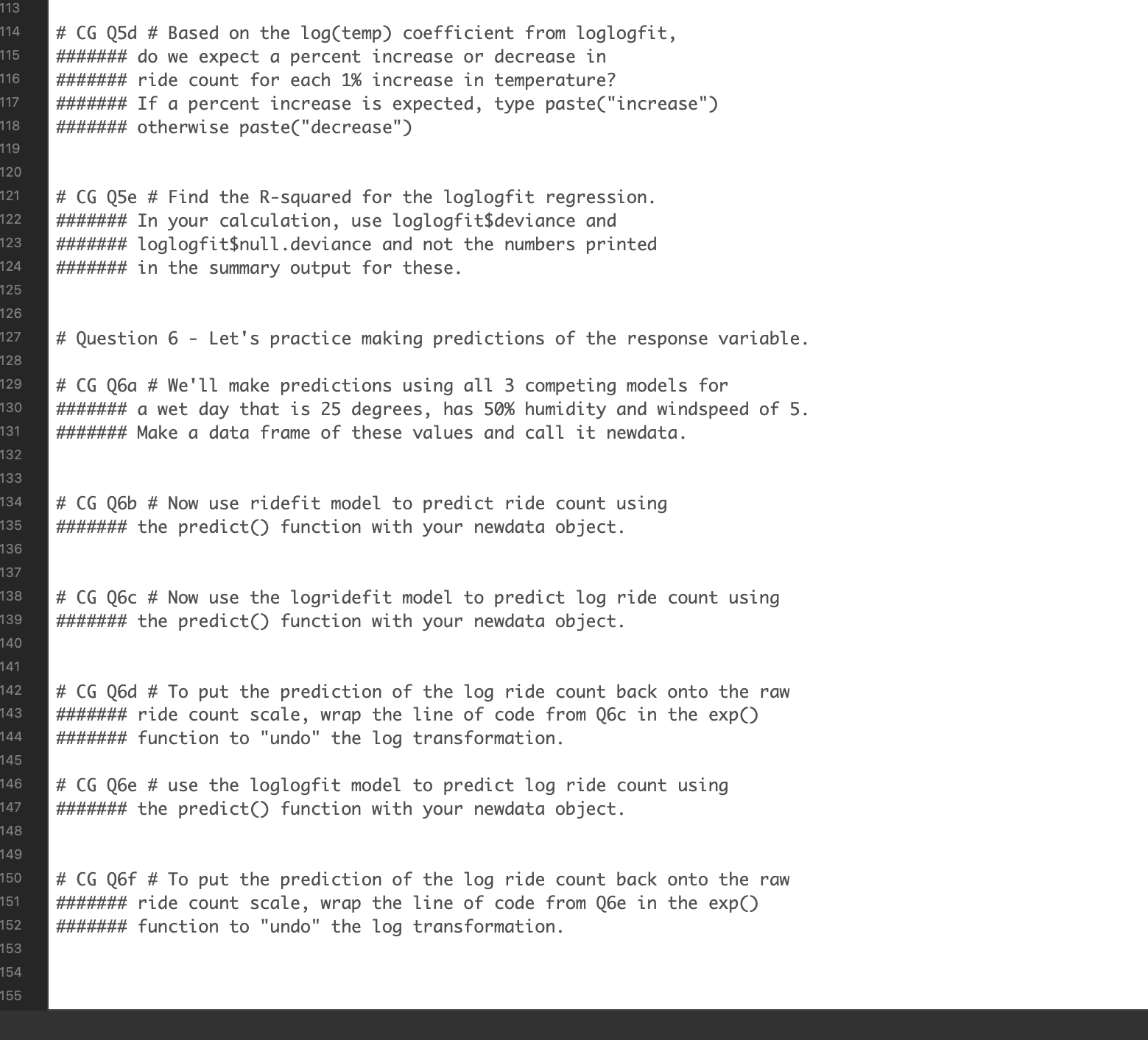Answered step by step
Verified Expert Solution
Question
1 Approved Answer
113 114 115 116 117 118 119 120 121 122 123 124 125 126 127 128 129 130 131 132 133 134 135 136

113 114 115 116 117 118 119 120 121 122 123 124 125 126 127 128 129 130 131 132 133 134 135 136 137 138 139 140 141 142 143 144 145 146 147 148 149 150 151 152 153 154 155 # CG Q5d # Based on the log(temp) coefficient from loglogfit, ####### do we expect a percent increase or decrease in #######_ride count for each 1% increase in temperature? ####### If a percent increase is expected, type paste("increase") ####### otherwise paste("decrease") # CG Q5e # Find the R-squared for the loglogfit regression. ####### In your calculation, use loglogfit$deviance and #######_loglogfit$null.deviance and not the numbers printed ####### in the summary output for these. # Question 6 Let's practice making predictions of the response variable. # CG Q6a # We'll make predictions using all 3 competing models for ####### a wet day that is 25 degrees, has 50% humidity and windspeed of 5. ####### Make a data frame of these values and call it newdata. # CG Q6b # Now use ridefit model to predict ride count using ####### the predict() function with your newdata object. # CG Q6c # Now use the logridefit model to predict log ride count using ####### the predict() function with your newdata object. # CG Q6d # To put the prediction of the log ride count back onto the raw ####### ride count scale, wrap the line of code from Q6c in the exp() #######_function to "undo" the log transformation. # CG Q6e # use the loglogfit model to predict log ride count using ####### the predict() function with your newdata object. # CG Q6f # To put the prediction of the log ride count back onto the raw #######_ride count scale, wrap the line of code from Q6e in the exp() ####### function to "undo" the log transformation.
Step by Step Solution
There are 3 Steps involved in it
Step: 1

Get Instant Access to Expert-Tailored Solutions
See step-by-step solutions with expert insights and AI powered tools for academic success
Step: 2

Step: 3

Ace Your Homework with AI
Get the answers you need in no time with our AI-driven, step-by-step assistance
Get Started


